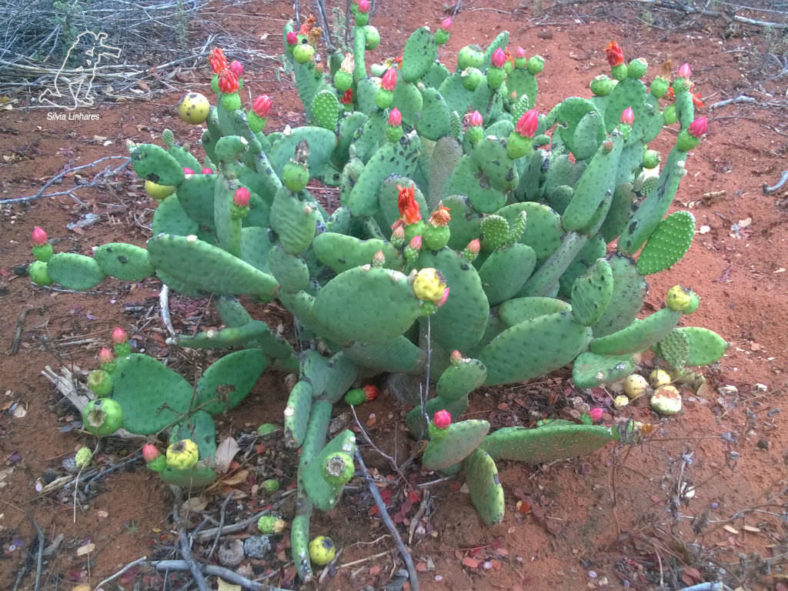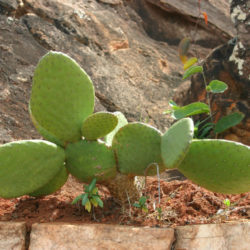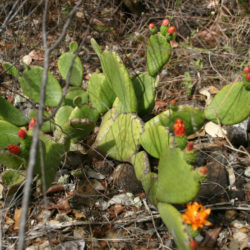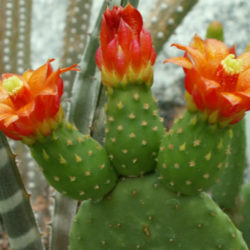Scientific Name
Tacinga inamoena (K.Schum.) N.P.Taylor & Stuppy
Synonym(s)
Opuntia inamoena, Platyopuntia inamoena, Tacinga inamoena subsp. inamoena
Scientific Classification
Family: Cactaceae
Subfamily: Opuntioideae
Tribe: Opuntieae
Genus: Tacinga
Description
Tacinga inamoena is a much-branched, shrubby cactus with segmented, grey-green to bluish-green stems with small areoles bearing short, yellowish-brown glochids. It can grow up to 20 inches (50 cm) tall, often spreading to 11.7 feet (3.5 m) wide. The stem segments are obovate or oblong and measure up to 6.4 inches (16 cm) long, 3.6 inches (9 cm) wide, and 1.4 inches (3.5 cm) thick. The stems are usually spinless but sometimes have 1 to 2 grayish-white spines on some segments.
The large flowers are glossy, orange to brick red, measure about 1.6 inches (4 cm) in diameter, and appear in summer at the tips of the higher-up stem segments. The fruits are spherical, up to 1.6 inches (4 cm) in diameter, green to reddish-orange with yellow-orange pulp and numerous brown seeds.
Origin
Tacinga inamoena is native to northeast Brazil. It grows in subtropical or tropical dry forests, subtropical or tropical dry shrubland, and rocky areas.

Hardiness
USDA hardiness zone 10b to 11b: from 35 °F (+1.7 °C) to 50 °F (+10 °C).
How to Grow and Care
Though the large variety of species within the Opuntia genus means different types of prickly pears may need slightly different care, all are desert cacti that need lots of sun, lots of light, and very little water. If you live in a hot, arid area – particularly the American Southwest – these plants can generally be planted outside, left alone, and enjoyed.
Though Opuntia will grow just fine in a garden, they can also be grown in pots. To repot, ensure the soil is dry, remove the pot, and remove the old soil. After treating any cuts with fungicide, place the prickly pear in a new pot and backfill it with potting soil. As with a new cutting, ensure not to water a newly repotting Prickly Pear briefly to avoid rotting its roots.
See more at How to Grow and Care for Opuntia.
Links
- Back to genus Tacinga
- Succupedia: Browse succulents by Scientific Name, Common Name, Genus, Family, USDA Hardiness Zone, Origin, or cacti by Genus
Photo Gallery
Click on a photo to see a larger version.



